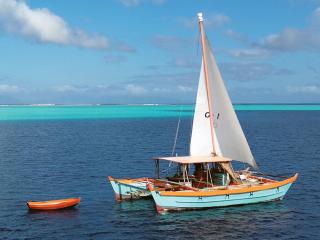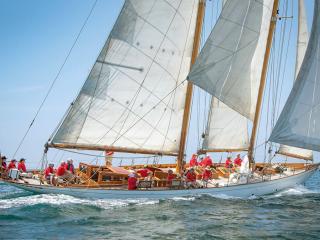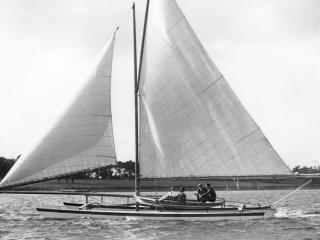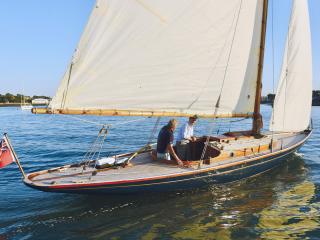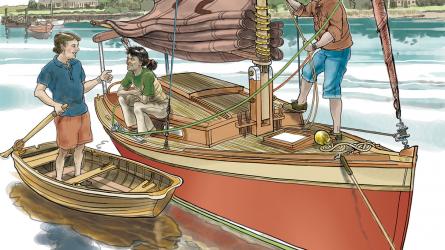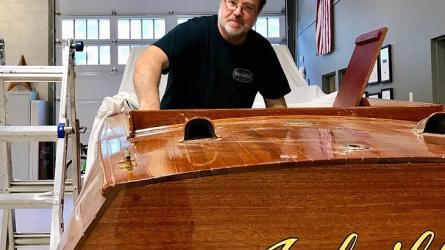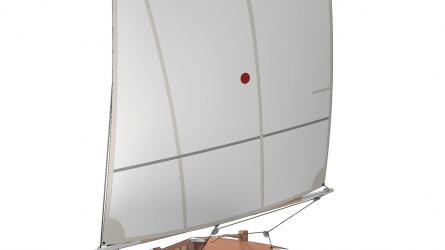July / August 2024
INTEGRITY
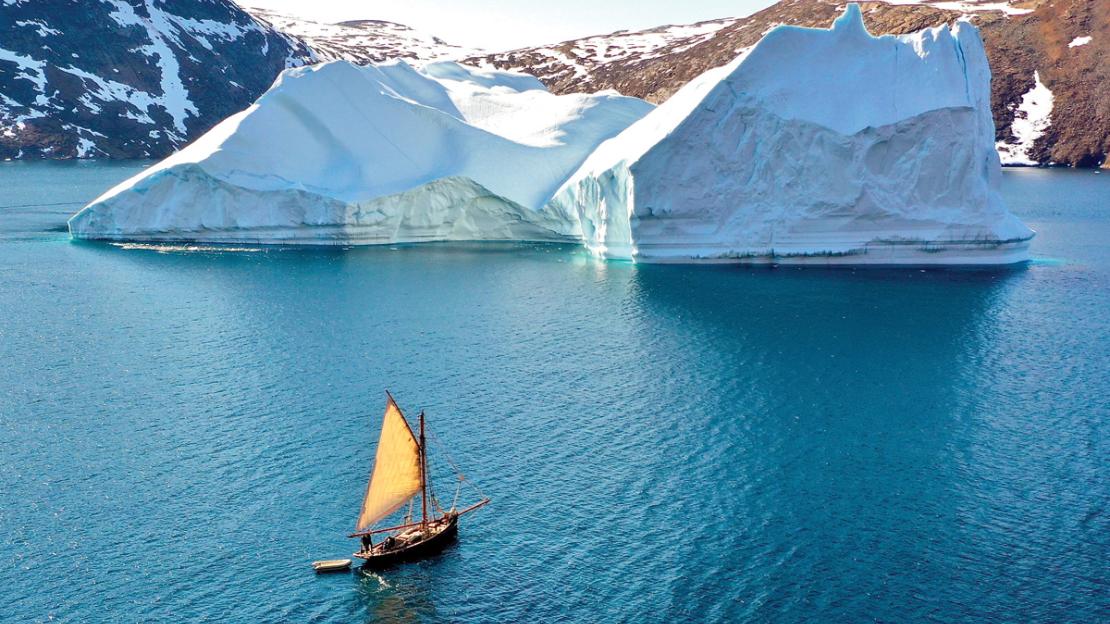
HUGH COULSON
INTEGRITY, 43′ LOD, was conceived for high-latitude sailing and a transit of the Northwest Passage. This photograph shows her sailing among icebergs in northwest Greenland early in her 2023 east-to-west voyage via the fabled passage.
It is a common escape to have expedition ideas by the fireside, all the more so when a dram of whiskey is involved. One can happily hold forth about the trials of sailing to Jan Mayen Island, a Norwegian island at 70°59' north latitude northeast of Iceland, and summiting the island’s Beerenberg volcano, secure in the knowledge that one will probably never own a vessel suitable for voyaging there. If, on the other hand, one happens to have a perfectly capable boat, be either careful what you say or be sure to wear an edible hat.
With INTEGRITY, my objective was to conceive, design, and build just such a boat, one meant for high-latitude sailing, and specifically for a transit of the storied Northwest Passage across North America. Yacht design is diverse; boats are a matter of taste. Yet I had an awareness of what might be in store, having previously sailed on three expeditions to the European Arctic and one in the Canadian Arctic. Design is also a compromise, and my restrictions were these: she must be a beautiful vessel that would be exciting to sail and be seaworthy. As a starting point, I chose the class of straight-stemmed British sailing yachts of the 1880s, the “gentleman’s cutter” of the Victorian era, a type that I find particularly graceful.
She must also be comfortable to live on, capable of being handled by two experienced sailors on watch. She must be of sufficient size (ultimately 43′ LOD, 37′ LWL, with a beam of 11′ and draft of 7′6″) to accommodate a strong expedition crew when sailing in high latitudes, built for strength and longevity, and suitable for worldwide cruising that could include small-scale icebreaking if needed.
She must, in addition, be well balanced. A well-proportioned hull with an appropriately designed rig will give the helmsman a feeling of responsive control in any circumstances. INTEGRITY, as designed and built, has a great deal of canvas—2,000 sq ft in fine weather. However, she is not an uncompromising plank-on-edge racing cutter, like some of her precursors. Her hull has integral form stability with ample beam and firm bilges that help her stand up to her rig. Her sections show a clean run aft culminating in an elegant counter with enough V-section to cleave the water and lift when running before a sea. Her forward sections are fine enough to be driven through the waves, yet her forward reserve buoyancy is good. She retains enough forefoot to grip the water when hove-to. Under inclement conditions, with the bowsprit reefed—meaning retracted and housed on the foredeck—and the topmast likewise housed, she can be snugged down to a quadruple-reefed main with a storm jib. It is important to have confidence in a boat’s ability to remain comfortable and safe when the weather deteriorates.
To read the rest of this article:
Click the button below to log into your Digital Issue Access account.
No digital access? Subscribe or upgrade to a WoodenBoat Digital Subscription and finish reading this article as well as every article we have published for the past 50-years.
ACCESS TO EXPERIENCE
Subscribe Today
1 YEAR SUBSCRIPTION (6 ISSUES)
PLUS ACCESS TO MORE THAN 300 DIGITAL BACK ISSUES
DIGITAL $29.00
PRINT+DIGITAL $42.95
Subscribe
To read articles from previous issues, you can purchase the issue at The WoodenBoat Store link below.
 Purchase this issue from
Purchase this issue from
